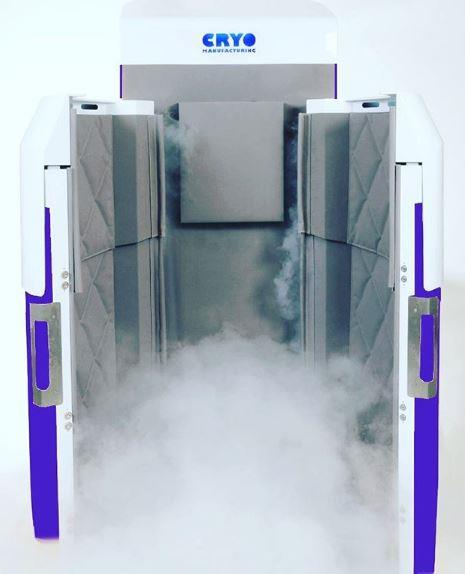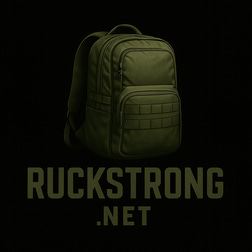Recover Faster: The Benefits of Cryotherapy for Ruckers
6/28/20254 min read


Understanding Cryotherapy: How It Works
Cryotherapy, a treatment method that utilizes extreme cold to induce therapeutic effects, has gained significant attention in recent years, particularly among athletes such as ruckers who demand optimal recovery strategies. The science behind cryotherapy is rooted in the principle that exposure to low temperatures stimulates various physiological responses that promote healing and muscle recovery. When the body is subjected to cold, blood vessels constrict—a process known as vasoconstriction—leading to reduced blood flow to the affected areas. This not only minimizes inflammation but also alleviates pain, enabling ruckers to quickly return to peak performance.
Two primary forms of cryotherapy exist: whole-body cryotherapy (WBC) and localized cold therapy. Whole-body cryotherapy typically involves standing in a chamber where the air temperature can drop to between -110°C and -140°C for a brief period, often lasting three minutes or less. During this time, the body undergoes a series of changes, including increased endorphin production and a rapid decrease in muscle temperature. These effects contribute to a stimulating sensation, helping to enhance mood and improve overall mental resilience amidst rigorous training.
Localized cold therapy, on the other hand, targets specific areas of the body, often using ice packs or specialized devices. This approach allows ruckers to focus on particular muscle groups or injuries. Localized cold therapy is especially effective in managing acute injuries, as it helps to numb pain and reduce swelling in the affected regions. Regardless of the method implemented, both types of cryotherapy trigger a complex interplay of responses—such as metabolic rate elevation and immune system activation—that significantly aid in the recovery process.
As ruckers continue to push their physical boundaries, integrating cryotherapy into their training regimens can offer essential recovery benefits, helping them to maintain performance and prevent injury.
Benefits of Cryotherapy After Intense Rucking
Cryotherapy has emerged as an effective recovery tool for individuals engaged in intense physical activities such as rucking. This innovative treatment involves exposing the body to extremely cold temperatures for a short duration, which can yield significant benefits for ruckers. One of the primary advantages of cryotherapy is its ability to reduce inflammation. After prolonged exertion, muscle inflammation is a common issue. The cold exposure constricts blood vessels, which can lead to a decrease in swelling and inflammation, allowing ruckers to feel more comfortable during their recovery period.
Additionally, cryotherapy is known for its effectiveness in alleviating muscle soreness. Intense rucking can often leave participants with delayed onset muscle soreness (DOMS), a phenomenon resulting from micro-tears in muscle fibers. By applying cold treatments, the pain perception can diminish rapidly, enabling ruckers to manage their post-exercise discomfort. This benefit is crucial as it encourages continual training without the debilitating effects of soreness that could deter performance and consistency.
Furthermore, cryotherapy accelerates recovery times, allowing ruckers to maintain a consistent training regimen. The faster recovery facilitated by cryotherapy can help athletes return to their routines sooner, ensuring they stay on track with their fitness goals. Regular use of cryotherapy not only enhances performance but also contributes to long-term athletic endurance by preparing the body for subsequent rucking sessions. Ruckers who incorporate cryotherapy into their post-exertion routine often find they can train harder and longer without compromising their recovery. Thus, integrating cryotherapy can prove to be an invaluable asset to rucking enthusiasts looking to optimize their training and overall performance.
Cryotherapy vs. Traditional Recovery Methods
Cryotherapy and traditional recovery methods such as ice baths have garnered attention for their effectiveness in aiding athletic recovery. While both approaches aim to reduce muscle soreness and enhance overall recovery, they employ different mechanisms and user experiences. Understanding the advantages and disadvantages of each can help ruckers make informed decisions regarding their recovery strategies.
Traditional ice baths have long been a staple in sports recovery protocols, relying on cold water immersion to decrease inflammation and numb soreness. Athletes typically submerge themselves in water temperatures around 10-15 degrees Celsius for a duration of 10-20 minutes. While this method can be effective for reducing delayed onset muscle soreness (DOMS), it is often met with discomfort. Many athletes find the experience to be mentally challenging and physically taxing due to the prolonged exposure to cold water, which can deter some from adhering to this recovery method regularly.
In contrast, cryotherapy involves exposure to extremely low temperatures, typically using localized cryo chambers or targeted cryo devices for shorter durations, usually around 3 minutes. This method not only leads to quick cooling of the skin surface but also promotes a rapid inflammatory response that may activate the body's healing processes more efficiently. One of the primary advantages of cryotherapy is its comfort level; many athletes report feeling invigorated rather than chilled, making it a more appealing option for post-training recovery.
Moreover, while both methods may enhance recovery outcomes, cryotherapy sessions often come with less time commitment and do not require prolonged immersion as ice baths do. However, some studies suggest that traditional ice baths may be more efficient for reducing immediate muscle soreness after high-intensity events. Ultimately, personal preference and individual needs will play significant roles in whether ruckers choose to integrate cryotherapy or stick with traditional recovery techniques in their post-exercise routines.
Incorporating Cryotherapy Into Your Recovery Routine Safely
To ensure that cryotherapy enhances your recovery routine safely and effectively, it is essential to approach its integration thoughtfully. First, seek out a reputable cryotherapy provider. Research facilities in your area, checking for certification, professional staff, and customer reviews to gauge service quality. A reliable provider should prioritize safety and health, offering guidance tailored to your needs. Consider consulting a health professional, such as a physical therapist, before beginning cryotherapy to determine if it aligns well with your recovery goals.
During your initial cryotherapy sessions, be prepared for what to expect. Most sessions last between three to five minutes in a cryo chamber, which can reach temperatures as low as -200°F. You may experience mild discomfort, but it should not be painful. Dress appropriately; typically, you will need to wear socks, gloves, and protective footwear while minimizing skin exposure. Listening to your body during these sessions is crucial; if you feel excessive discomfort or experience any adverse symptoms, notify the technician immediately.
To maximize the benefits of cryotherapy, consider how it can fit into your overall recovery strategy. Combining cryotherapy with complementary methods, such as hydration, nutrition, and gentle stretching, can enhance the body’s recovery process. For instance, utilizing cryotherapy post-exercise can reduce inflammation, while hydration can aid tissue repair. Be mindful of incorporating rest days in your routine as well, allowing your body to heal and recover optimally.
Ultimately, successful integration of cryotherapy requires mindfulness and a focus on personal well-being. Adapting any recovery routine should prioritize individual needs and responses; regular check-ins with a healthcare provider can help tailor the use of cryotherapy within your regimen. This considerate approach will maximize recovery efficiency and support overall health improvements.
